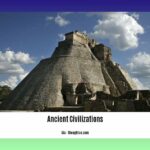The New York Times crossword puzzle frequently offers glimpses into history, and a recent clue, “Ancient Mesopotamian civilization,” sparked considerable interest. While “Assyria” was the designated solution, this seven-letter answer only scratches the surface of a multifaceted historical narrative. This article delves deeper, exploring the rich tapestry of ancient Mesopotamia, a region that cradled civilizations and innovations that continue to resonate in our modern world.
Unraveling the Cradle of Civilization
Ancient Mesopotamia, the “land between two rivers” (the Tigris and Euphrates), wasn’t a monolithic entity. It was a dynamic crucible of interconnected cultures and empires, each contributing to a legacy that shaped the trajectory of human civilization. This region, often hailed as the “cradle of civilization,” witnessed the birth of writing, the development of codified law, advancements in mathematics and astronomy, and the rise of complex urban centers – all exceeding the scope of a simple crossword clue. Exploring ancient Mesopotamia offers a captivating journey into a world that laid the foundation for much of Western thought and culture.
From Sumerian Scribes to Babylonian Gardens: A Timeline of Innovation
To truly grasp the complexity of ancient Mesopotamian civilization, we need a chronological framework. The following timeline highlights key periods and civilizations:
Sumerians: The Dawn of Writing (c. 4500-1900 BCE)
Long before the Assyrians rose to prominence, the Sumerians established a network of independent city-states, each with its own patron deity and a surprisingly sophisticated social structure. Their most enduring legacy is the invention of cuneiform, the world’s earliest known writing system. Imagine a world without the ability to record thoughts, histories, and discoveries! Cuneiform, using wedge-shaped marks on clay tablets, allowed for complex record-keeping and communication, fundamentally transforming human society. The Sumerians also constructed impressive ziggurats, stepped pyramid-temples that served as religious and administrative centers, showcasing their architectural ingenuity. Delve into the captivating world of historical artifacts like these with ascalon scans and uncover the mysteries of the past.
Akkadians: Forging the First Empire (c. 2334-2004 BCE)
Sargon of Akkad, a name etched in history, unified the disparate Sumerian city-states under his rule, creating the first true empire in the region. This political consolidation likely facilitated more efficient resource management and defense. Astonishingly, the Akkadians also established a postal service – imagine receiving mail thousands of years ago! This innovation streamlined communication and likely boosted trade across their vast territory.
Babylonians: Law, Order, and Hanging Gardens (c. 1792-1750 BCE)
The Babylonians, under King Hammurabi, are renowned for their sophisticated legal code. Hammurabi’s Code, inscribed on a towering stele, represents a milestone in the history of law. The principle of “an eye for an eye,” while seemingly harsh by modern standards, reflects the code’s emphasis on retribution and proportionate justice. Beyond law, Babylon flourished under Nebuchadnezzar II, who commissioned the construction of the Hanging Gardens, one of the Seven Wonders of the Ancient World. While some historians debate their exact location and even existence, the legend of the Hanging Gardens endures as a testament to Babylonian architectural ambition and aesthetic sensibility.
Assyrians: Military Prowess and Cultural Sophistication (911-609 BCE)
While often portrayed as ruthless conquerors (and their military prowess was undeniable), the Assyrians contributed significantly to Mesopotamian culture. They were skilled metalworkers, utilizing iron for tools and weapons, which provided a distinct military advantage. Their capital, Nineveh, housed a vast library filled with cuneiform tablets covering diverse subjects, demonstrating their value for knowledge and record-keeping.
The Seleucid Empire: A Hellenistic Fusion (312-63 BCE)
Following Alexander the Great’s conquests, the Seleucid Empire introduced a Hellenistic influence to Mesopotamia. Greek language, art, and administrative systems intermingled with existing Mesopotamian traditions, creating a unique cultural blend. This fusion demonstrates the dynamic exchange of ideas and practices that often accompanies imperial expansion.
Mesopotamia’s Enduring Legacy
The impact of ancient Mesopotamia extends far beyond its geographical boundaries and historical timeframe. From the 60-minute hour to the 360-degree circle – concepts rooted in Mesopotamian mathematics and astronomy – their intellectual contributions continue to shape our understanding of the world. Their innovations in agriculture, irrigation, and urban planning laid the groundwork for countless societies that followed. Ongoing research continually reveals new insights into the complexities of these ancient cultures, challenging existing assumptions and enriching our appreciation for their profound influence.
Deciphering the Name: Mesos and Potamos
The word “Mesopotamia” itself tells a story. Derived from the ancient Greek words mesos (middle) and potamos (river), it literally means “between rivers,” referencing the Tigris and Euphrates. These rivers were not merely geographical boundaries; they were the lifeblood of the region, providing water for agriculture, sustenance through fishing, and avenues for trade. They also brought the periodic threat of floods, reminding the inhabitants of the power of nature. The interplay between these rivers and the people who lived between them shaped Mesopotamian mythology, religion, and daily life.
Beyond Assyria: A Broader Perspective
While “Assyria” serves as a valid crossword answer, it’s crucial to recognize the broader context. Mesopotamian civilization encompassed a multitude of cultures and empires over millennia. Focusing solely on Assyria overlooks the significant contributions of the Sumerians, Babylonians, Akkadians, and others. Each played a vital role in the development of this pivotal region. By exploring these interconnected narratives, we gain a more nuanced and comprehensive understanding of ancient Mesopotamia’s enduring legacy.
- Unlock Water’s Symbolism: A Cross-Cultural Exploration - April 20, 2025
- Identify Black and White Snakes: Venomous or Harmless? - April 20, 2025
- Unlocking Potential: Origins High School’s NYC Story - April 20, 2025















